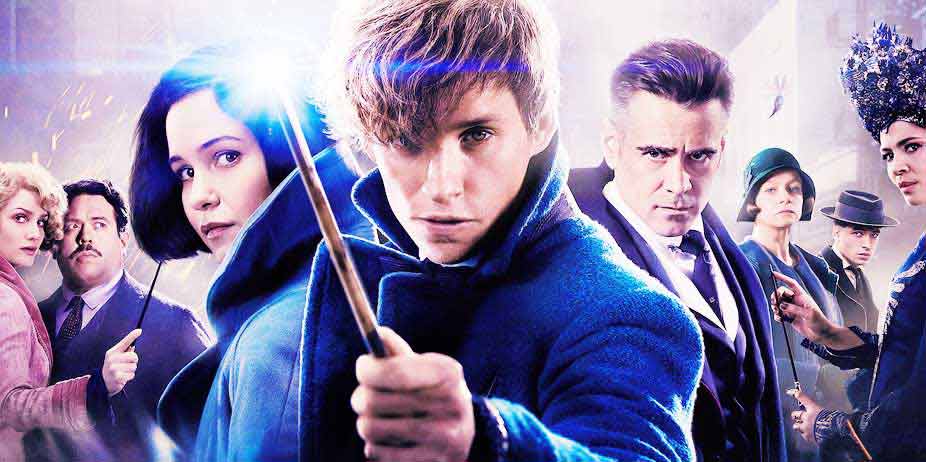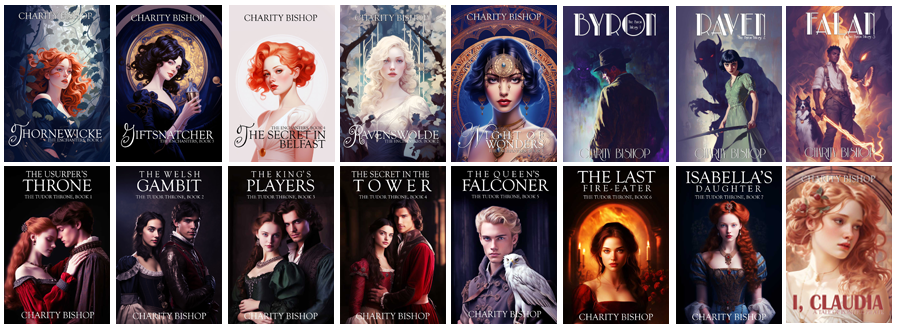
Fantastic Beasts & Where to Find Them (2017)
I originally wrote this review for Christian Spotlight.
One of the most talented and controversial authors of the last decade, J.K. Rowling never fails to cast a spell over her audience—and the box office. The global phenomenon of the boy wizard and his friends left no family untouched, creating fans and critics alike. Now, she launches into a new franchise depicting the adventures of Newt Scamander, known in the Potterverse as the author of a book on Hogwarts’ “required reading” list.
New York City, 1926.
Jacob Kowalski (Dan Fogler) doesn’t know magic, wizards, or magical creatures exist. He works in a cannery and dreams of owning a bakery. Dressed up, with a suitcase full of pastries, he enters the bank to apply for a loan… but Newt (Eddie Redmayne) plops down beside him. When Newt dashes off in pursuit of an escaped magical creature from his case of fantastic beasts, he leaves an egg behind. It hatches—launching Jacob into a mythological world where pretty girls bake dinner in midair before his eyes, suitcases are much bigger on the inside, goblins run nightclubs, and where the ugly truth of the unseen horror wreaking havoc on New York comes to light.
Newt is on a world tour, intent on doing research for a
book. Alas, his escaped creatures inside the bank lands
him a one way ticket to “the authorities.” The auror who
arrests him is Tina (Katherine Waterston), whose recent
behavior earned her banishment to the basement and
suspension from her duties. She hopes this capture will
put her back in the good graces of the higher-ups. It
doesn’t. Then, they realize Jacob has Newt’s briefcase.
And he’s just popped the locks.
Several things kept circling through my mind while
watching this film. The first is what Jesus said,
“Better for them to be thrown into the sea with a
millstone tied around their neck than to cause one of
these little ones to stumble.” “Fantastic Beasts and
Where to Find Them” is many things, but at its heart, is
a story about child abuse. It’s about losing oneself in
the pain of suffering and the devastation of the soul.
It’s about turning pain into uncontrolled anger, and
lost innocence. It’s about injustice, cruelty, and
redemption. Rowling has tackled these topics before, but
never with such raw depth. This is a more mature world
than Harry Potter. Abuse no longer is sleeping in a
cupboard; it’s red welts, lowered heads, and fear behind
children’s eyes as they remove their belt and hand it to
“mother.” Scenes where an abused young man is
emotionally manipulated by Graves (Colin Farrell) are
equally difficult to watch. He offers love to a boy
desperate for any sign of human kindness, only to tear
it away when he doesn’t get what he wants.
Newt and Graves represent the forces of good and evil
within the story. Newt is the savior, who loves all
creatures and tries to save the lost. Graves is the
devil who manipulates, twists the pain deeper, and turns
his back on suffering. Though prevalent, these scenes
doesn’t overwhelm the story; they’re part of a larger
narrative scope, which shifts between comedic beats,
delightful explorations into new places and creatures,
and an underlining mystery. Entertaining, engaging, and
memorable, it’s an assault on those who inflict harm, an
exploration of the pain it causes, and an appeal to the
audience to care about “the least of these.”
Rowling tucks many delightful winks into the story for
long-time fans of the books; names such as Dumbledore
and Grindelwald surface, along with a subtle reference
to the search for the Deathly Hallows. We meet
Bowtruckles and other beasts. The film is gorgeous, an
immersive experience, from swinging Twenties streets to
the lovely costume design. No doubt you’ve already
reached a conclusion about whether the magic in
Rowling’s stories is appropriate for your family. This
film contains much of the established fantasy magic from
the earlier franchise (vanishing and appearing in
different places, modifying memories to erase magical
events, wand-waving, etc.) and emphasizes one
character’s ability to read others’ minds. Small
children may find some scenes (particularly the idea of
an abusive parent) frightening. Some may see the
character of Mary Lou as a blow at fundamentalism,
perhaps even an embodiment of the religious right (in a
time when debate rages over sexual orientation, Mary Lou
forcing her “children” to repress their “true nature”
brings up parallels for discussion), but I see her as
the personification of all that is not godly. Jesus
spoke out against abuse, and offered love free of
manipulation. Like Newt, he seeks to pull broken,
hurting people back from their own inner darkness. The
question is whether people will accept it.
Sexual Content:
Queenie greets them in a slip, and sensually clothes herself; she says most men “think” about her in the way Jacob does, once they meet; Newt says a creature must “mate” and attracts her back into the briefcase with a scent that reminds her of a male of her kind.
Language:
None noted.
Violence:
Creatures wreak havoc. Wizards duel one another intending harm. Physical abuse is implied with a boy removing his belt and handing it to his “mother” several times; he and other children show welts on their hands. A magical force carries people up in the air and drops them from great heights, killing them.
Other:
Some social drinking, and of course, lots of good and bad magic.
